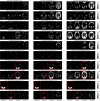Accurate autocorrelation modeling substantially improves fMRI reliability
- PMID: 30899012
- PMCID: PMC6428826
- DOI: 10.1038/s41467-019-09230-w
Accurate autocorrelation modeling substantially improves fMRI reliability
Erratum in
-
Publisher Correction: Accurate autocorrelation modeling substantially improves fMRI reliability.Nat Commun. 2019 Mar 29;10(1):1511. doi: 10.1038/s41467-019-09619-7. Nat Commun. 2019. PMID: 30926806 Free PMC article.
Abstract
Given the recent controversies in some neuroimaging statistical methods, we compare the most frequently used functional Magnetic Resonance Imaging (fMRI) analysis packages: AFNI, FSL and SPM, with regard to temporal autocorrelation modeling. This process, sometimes known as pre-whitening, is conducted in virtually all task fMRI studies. Here, we employ eleven datasets containing 980 scans corresponding to different fMRI protocols and subject populations. We found that autocorrelation modeling in AFNI, although imperfect, performed much better than the autocorrelation modeling of FSL and SPM. The presence of residual autocorrelated noise in FSL and SPM leads to heavily confounded first level results, particularly for low-frequency experimental designs. SPM's alternative pre-whitening method, FAST, performed better than SPM's default. The reliability of task fMRI studies could be improved with more accurate autocorrelation modeling. We recommend that fMRI analysis packages provide diagnostic plots to make users aware of any pre-whitening problems.
Conflict of interest statement
The authors declare no competing interests.
Figures




References
Publication types
MeSH terms
Grants and funding
LinkOut - more resources
Full Text Sources
Medical

